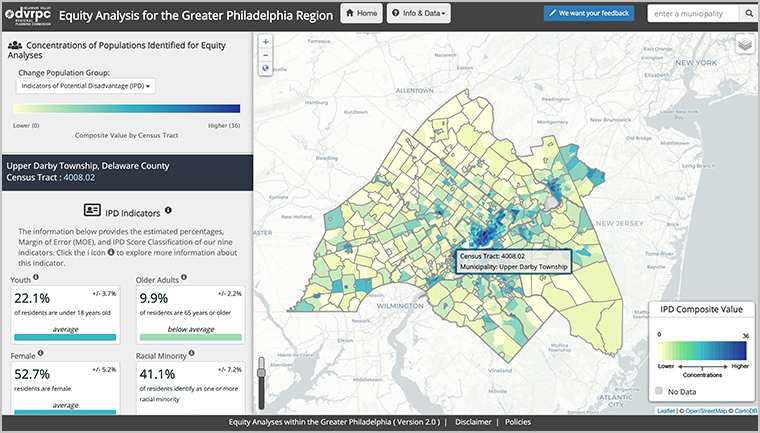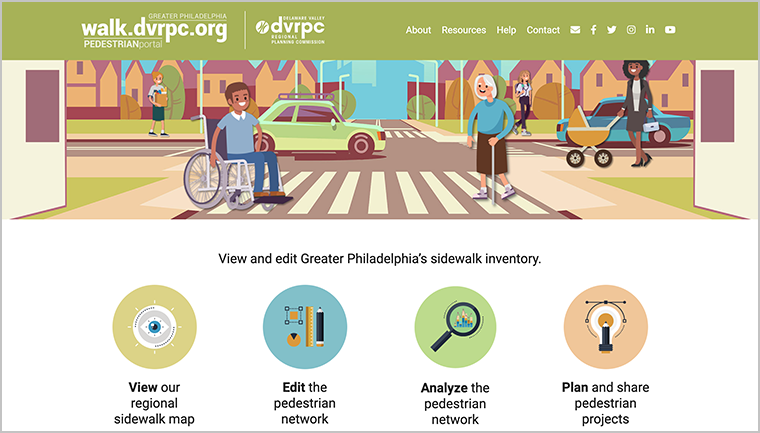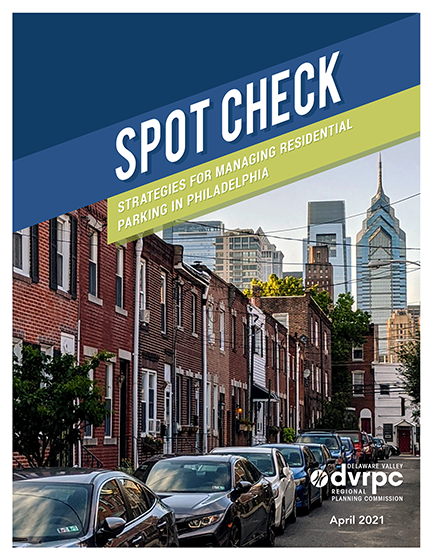Volume 42, Issue 12
New Report Finds Mortgage Lending Disparities Across Greater Philadelphia

Barriers to Building Generational Wealth: Mortgage Lending Disparities Across Greater Philadelphia, provides an analysis of mortgage lending trends throughout Greater Philadelphia from 2004 to 2019, and presents findings of racial, ethnic, and geographic mortgage lending disparities that exist within the region. The findings are critical because although the official practice of redlining is no longer legally permissible, data in the report outline the significant disparities in mortgage lending that still persist throughout the region.
In Greater Philadelphia, Black and Hispanic applicants are denied at significantly higher rates than their Asian and white counterparts. Due to these disparities, the region’s generational and racial wealth gaps continue to grow and further undermine the economic vitality and resiliency of Greater Philadelphia.
Read the report for expanded analysis and more information.
Municipal Management of Extreme Heat

Extreme heat impacts the quality-of-life of the region’s most vulnerable populations. This new Municipal Implementation Tool (MIT) brochure summarizes the causes of current and future extreme heat, the impacts of extreme heat, and how municipalities can mitigate, prepare for, and respond to extreme heat events.
This brochure uses data and outlines different steps municipalities can take to reduce the impact of extreme heat based on their locations specific needs.
Read the MIT for additional details.
Data Update: Equity Analysis for Greater Philadelphia

DVRPC’s Equity Analysis for the Greater Philadelphia Region has been updated with new Census data. DVRPC created the Indicators of Potential Disadvantage (IPD) data layer to help staff, member governments, planning partners, and the general public consider Civil Rights (Title VI) and Environmental Justice concerns when carrying out planning activities, project development, and programming.
The IPD webmap identifies populations of interest as identified by Title VI of the Civil Rights Act and the 1994 Executive Order on Environmental Justice using U.S. Census American Community Survey (ACS) 2015-2019 five-year estimates data, and maps these populations in each of the Census tracts in the region via GIS. Each population group is an “indicator” in the analysis and includes youth, older adults, female, racial minority, ethnic minority, foreign-born, limited English proficiency, disabled, and low-income.
Explore the updated webmap and data.
$5 Million Awarded to Transportation Projects that will Improve Air Quality

At the May Board meeting, DVRPC awarded almost $5 million in Congestion Mitigation and Air Quality (CMAQ) funds for five projects in southern New Jersey. CMAQ is a source of federal funds available for transportation projects that will improve air quality and reduce congestion in areas that do not currently meet federal air quality standards.
In this round, the program awarded slightly over $3 million to Camden County for a bike/ped bridge over Route 130 in Pennsauken Township to help complete a network of over 800 miles of planned multi-use Circuit trails in Greater Philadelphia. Other projects include: an award to Voorhees Township in Camden County for ped/bike lane improvements in several municipalities to enable better access to the Ashland PATCO station; an award to Lawrence Township in Mercer County for congestion reduction and traffic flow improvements at two intersections; electric vehicle charging stations on public property in Trenton as part of NJDEP’s new e-Mobility program and its marketing; and marketing support for Greater Mercer Transportation Management Association’s new dynamic ridesharing app program for essential workers.
Learn more about the CMAQ program and funded projects.
DVRPC Funds Four Innovative TDM Projects

Four innovative transportation projects will receive funding through the new Travel Options Program (TOP). The program funds projects that will provide better access to more travel options across the region, such as walking, biking, and taking transit. The goal is to reduce the number of single occupancy vehicles on the region’s roadways - a practice otherwise known as Transportation Demand Management (TDM).
Selected projects include an automated vehicle shuttle at the Navy Yard in South Philadelphia, a marketing program that includes a new digital bicycle map for the City of Philadelphia, a “complete streets demo” to educate residents near the Collingswood PATCO station, and a project to connect RiverLINE users to nearby Circuit Trails. Applicants went through a two-stage process and a selection committee made up of representatives of partner agencies from throughout the region rated, scored, and selected the finalists.
Learn more about the selected projects at www.dvrpc.org/TOP.
New Tool: Sidewalk Gap Analysis Explorer

How well-connected is the pedestrian network in Greater Philadelphia? How do gaps in the pedestrian network affect our ability to travel around the region? The new Sidewalk Gap Analysis Explorer helps communities prioritize pedestrian improvements that will make the greatest impact.
The map explorer uses four analyses to examine different elements of pedestrian accessibility:
- The Street Segment Gaps tool identifies sidewalk coverage for each street segment in the region.
- The Walk Time to Transit tool calculates walking time to the nearest transit stop along the sidewalk network.
- The Rail Station Walkshed tool presents accessible “walksheds” for rail stations in the region by comparing the accessible sidewalk network to the roadway network within a mile of a station.
- The Islands of Connectivity tool identifies contiguous “islands” of connected sidewalk. Larger islands mean a more connected network, while smaller islands represent isolated bits of sidewalk network.
Check out the Sidewalk Gap Analysis Explorer and other pedestrian tools at walk.dvrpc.org.
What the New Bike Counters on Spruce and Pine Tell Us

In November 2020, DVRPC and Philadelphia’s Office of Transportation, Infrastructure, and Sustainability (oTIS) and its Streets Department completed the installation of in-street bicycle counters on Spruce and Pine streets. The counters run 24/7, 365 days a year.
The analysis here highlights shifts in commute patterns during COVID, as well as the increased consistency of cyclists using the Spruce and Pine street bike lanes, even when bicycle volumes fluctuate on nearby trails, suggesting that cyclists use these bike lanes similar to how a driver uses a street.
Permanent bicycle counters allow decision makers to better understand how various factors influence cycling as a viable form of transportation. The counters have provided valuable data regarding commuting during COVID.
New Products

Spot Check: Strategies for Managing Residential Parking in Philadelphia
Residential permit parking (RPP) is a critical, yet often overlooked, component of parking management. In many Philadelphia neighborhoods, interconnected demographic, development, and socioeconomic factors are contributing to a surge in parking demand that is straining RPP districts.
This report presents information on the factors driving demand for parking in Philadelphia and identifies potential RPP reforms that can help the city adapt to a variety of transportation challenges.
Montgomery County PA Turnpike Interchange Report
This study evaluates three proposed new or completed Pennsylvania Turnpike interchanges in Montgomery County. The three proposed interchanges are divided into two study areas based on location. The proposed new interchange at Welsh Road and the proposed completed Virginia Drive interchange were studied independently of the proposed new interchange at Henderson Road.
The main goals of the evaluations were to inform the public and local decision makers of the likely impacts of the new interchanges on the local roadway network and to identify additional roadway improvements to mitigate negative impacts.
Economic Sectors Analysis Presentation
This memo is an addendum to the Comprehensive Economic Development Strategy (CEDS). Using North American Industry Classification System (NAICS) subsectors, this analysis highlights the top 10 most competitive industries at the regional and county level based on Location Quotient (LQ). Industries are evaluated based on total employment, change in total employment from 2010 to 2017, and their average weekly wages.
MQS—Chester County Airport 2019 Aircraft Operations Counting Program
This technical report presents aircraft operations estimates for MQS—Chester County Airport in Coatesville, Pennsylvania. These results are used by multiple sources to monitor aircraft activity levels in the Delaware Valley and as a base for planning and forecasting documents.
LOM—Wings Field 2019 Aircraft Operations Counting Program
This technical report presents aircraft operations estimates for LOM—Wings Field in Blue Bell, Pennsylvania. These aircraft operation estimates are a part of the cyclical regional aircraft counting program.
Staff Profile: Elizabeth Schoonmaker
Associate Director, Transportation Programs

What did you want to be growing up? A teacher. I had good relationships with my teachers so thought I’d like to be one too.
What was your first job? As a teenager, I worked at the Woolworths on Chelten Avenue, as a floor stock person and cashier. I think the building is now gone.
What did you study in college? I majored in geography, and was especially interested in transportation, probably because of both my father and his grandfather’s careers.
What were their careers? My great-grandfather was a draftsman for Grand Central Terminal, and my father worked for NY Central RR, which became Penn Central RR and then Conrail. Also, I took SEPTA and AMTRAK everywhere growing up.
How did you end up at DVRPC? Like many, I had planning internships in college, working for a municipality and later for an MPO called CMRPC - Central Massachusetts Regional Planning Commission. If anyone has trouble with our DVRPC acronym, just try saying CMRPC multiple times! In 2000, I moved back to the region, and a friend that worked at SEPTA told me about the Capital Programs Manager position at DVRPC, thinking it a good fit. Turns out it was.
You started out as Manager of Capital Programs 20 years ago, and are now retiring as Associate Director of Transportation Programs, overseeing Capital Programs, Transportation Operations, and Project Implementation. What has changed over the years? Of course technology has changed a lot. But also the number of partner relationships the agency as a whole and our various departments have has grown exponentially, and that’s been a really good thing.
What are some favorite activities or aspects of the job you’ve most enjoyed? I really like mentoring staff, so that part of me that wanted to be a teacher gets realized in that way. In addition, I’ve focused a lot of attention on better integrating DVRPC’s planning work with how our implementing agencies deliver projects, and I’ve enjoyed fostering those linkages. And, even if it doesn't appear this way, the work is always changing, with new challenges to address and a constant need to facilitate relationships both between and within agencies, to move projects forward.
What three words best describe you? Collaborative, steady, determined
Do you have a life or work philosophy? Be kind to each other and it's really important to listen to others’ point of view.
If you could be Queen of the Delaware Valley for a day, what would you declare? Take a day to walk in someone else’s shoes.
Do you have a fantasy career, if you had not followed the planning path? I would design and create unbelievable handmade jewelry.
What book are you reading? I’ve got two on my nightstand: The Life of Elizabeth I, by Alison Weir, and White Fragility, by Robin Diangelo.
Have you developed any new habits during the pandemic? I got a new bike and have been riding it around Philly, exploring neighborhoods. There are always new routes to try and new blocks to discover.
What pre-pandemic trend are you looking forward to returning? Going to the movies.
You’re retiring at the end of June - what are your plans? To do things I want to, and not do things I don't want to! I hope to bring more creativity into my life through art and music, to visit with friends and family that I don't get to see often, to travel again, and to not have to hurry so much!
Could you sum up your two decades of work at DVRPC? That’s really hard! But I can say that it’s been really rewarding, I’ve met and worked with great people, accomplished some things, and been able to make a difference for an area that’s my home.
Upcoming Online LTAP Classes

The Local Technical Assistance Program (LTAP) provides technical information and expertise to help municipal governments use transportation funds more effectively, improve road maintenance, and increase roadway safety. Classes are held by Pennsylvania and New Jersey LTAP programs, but are open to any municipality.
Upcoming online classes:
Roadside Vegetation Control (Webinar)
June 9, 2021 (8:00 am – 11:00 am)
Basic Math and Plan Reading (Webinar)
June 10, 2021 (9:00 am – 1:00 pm)
Visit Rutgers Center for Advanced Infrastructure and Transportation to see the 2020 schedule of LTAP courses in New Jersey.
Visit PennDOT's LTAP website to view the course descriptions and register. For any questions, contact Linda McNeffer at lmcneffer@dvrpc.org or 215-238-2872.